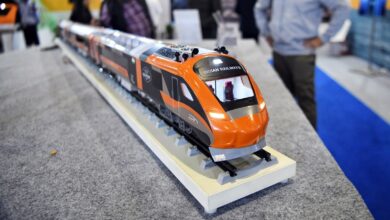2024 Summer Olympics: Self-healing pole is a big step forward for sports technology

Swiss Company Couple focuses on composite materials with the goal of making products easier to repair. CompPair’s signature composite material relies on HealTech technology to create a surface that can heal. The way it works is that when something is scratched or dented, heating the resin that holds the fibers together can soften them and allow them to slowly wick back into their original shape.
This process isn’t instantaneous. Depending on the crack, it can take a few minutes, or sometimes a day or more. But once it’s done, the compound will be almost as good as new. To be clear, this process has never been used in a jump pole. CompPair has tested its composites on mostly flat, more controllable surfaces. Getting those composites into a jump pole—while maintaining the integrity of the structural fibers—is a whole other challenge.
CompPair co-founder and chief technology officer Robin Trigueira says there’s a world where using these types of composites could lead to more repairable sports equipment. Trigueira says he can envision a future where Olympic stadiums provide extra-long ovens where jumpers can place their repairable poles overnight to make sure they’re nice and sealed before the event.
“I think it’s possible,” Trigueira said. “But we have to do some rigorous testing to learn something like this.”
The future heals itself
The problem with using these composites in something like pole vaulting is that making sure they solve the problem at hand is incredibly complicated. Adding a new composite because it can heal can also introduce a whole host of new variables that don’t mesh well with the structural components of the pole. Adding a glossy finish to the surface to make cracks visible can change the way a pole vaulter handles the pole.
Every crack and dent is different and may not heal the same depending on how it develops. Some damage may be too structural to be melted with a little redistribution of the composite. Depending on the defect itself, it may take a long time to repair. Additionally, heating a plastic that heals may damage other composite materials.
Trigueira compares the process to a physical injury. If you just have a scrape on your arm, you might not even bother, and the wound will heal quickly. But something deeper and more serious will take longer to figure out, and could lead to additional complications.
“It’s rare that you get the exact same injury as someone else,” Trigueira says. “Is it a small scrape or a deeper wound? We need to know that so we can heal effectively.”
The idea of using composite materials that can heal in poles is not new either. It has been around for a long time. at least since 2017But no healable poles have been created—until now. Rahrig says Essx is not currently making any efforts to add such healable plastics or composites to its poles, though he doesn’t deny that it could one day be used to create a more durable pole.
“We’re working on materials like this all the time,” Rahrig said. “Right now it’s purely research-grade. It’s interesting, but how it would be used in a column, I’m not sure.”
Outside of the Olympics, pole vaulting has a smaller presence in the general sports world. There’s not a lot of money in pole vaulting, so it’s likely that these types of materials will show up elsewhere first. Trigueira says CompPair isn’t currently working with any pole vault companies to incorporate its composites into their products, but says it’s working on deploying them in more prominent sports equipment like surfboards and bike frames.
So while it may be a while before this kind of innovation appears on the humble jump pole, both Rahrig and Trigueira say it’s possible and likely. “I think in 10 years, it’s safe to say there will be a jump pole with a restorable composite material,” Trigueira says.
Correction: 07/26/24, 8:51 AM: Clarified that CompPair is researching recyclable composite materials for bike frames, not bike pedals.




